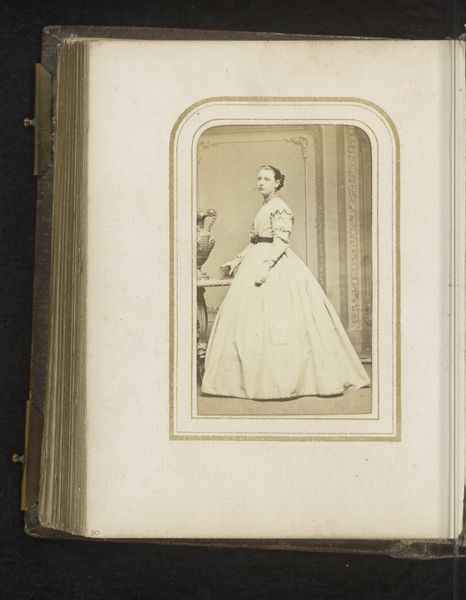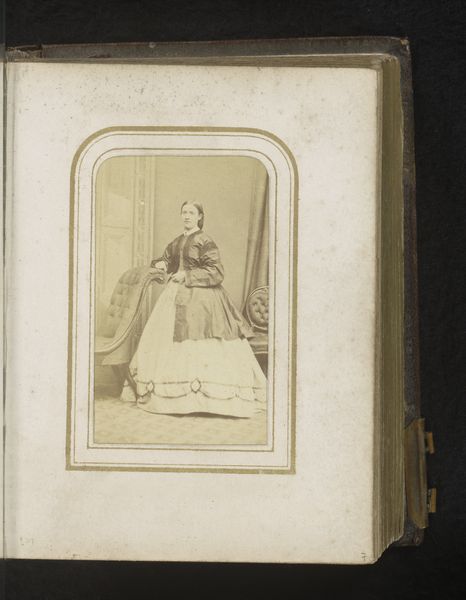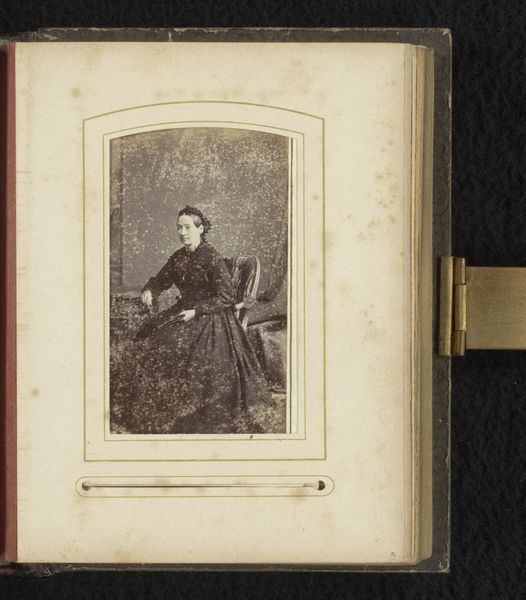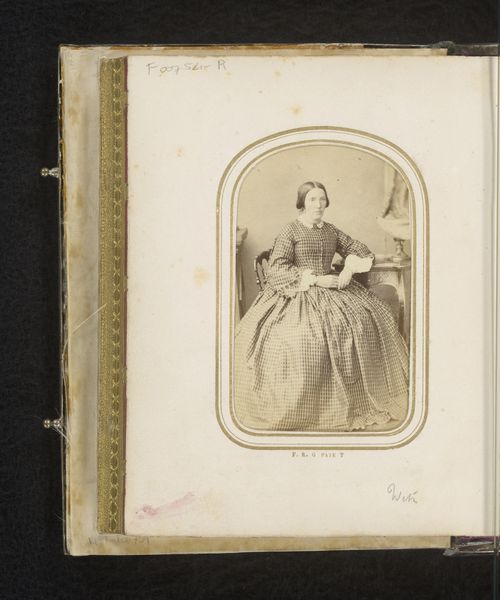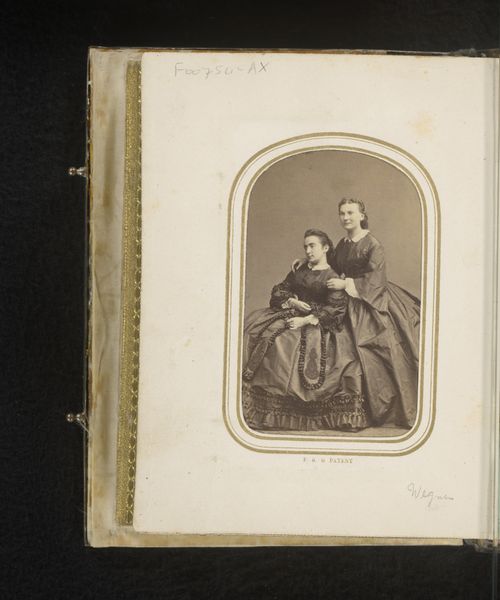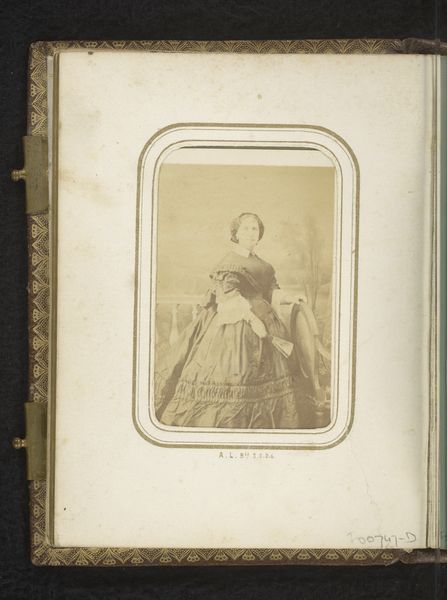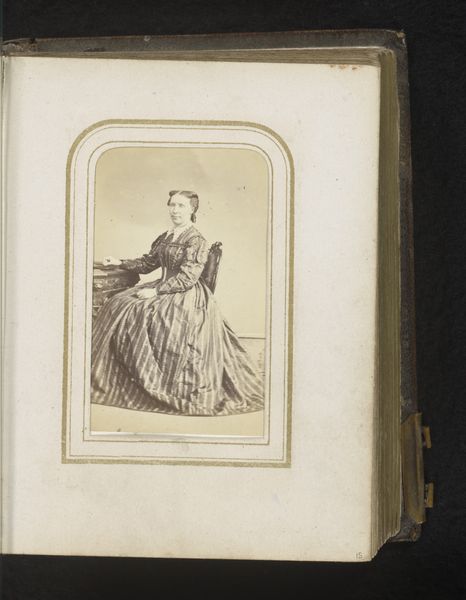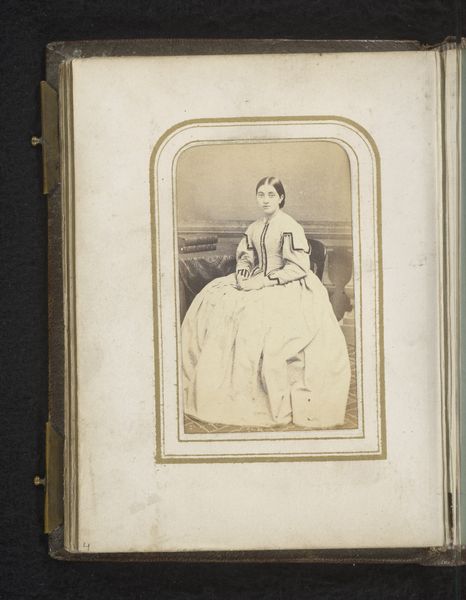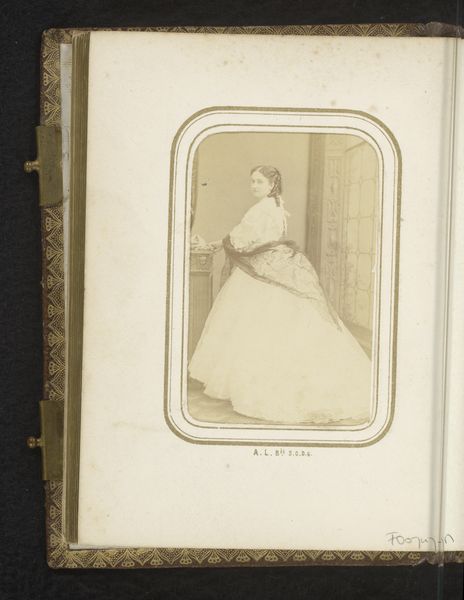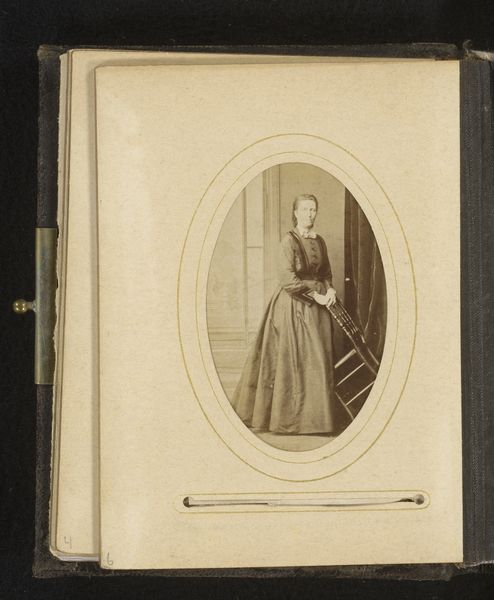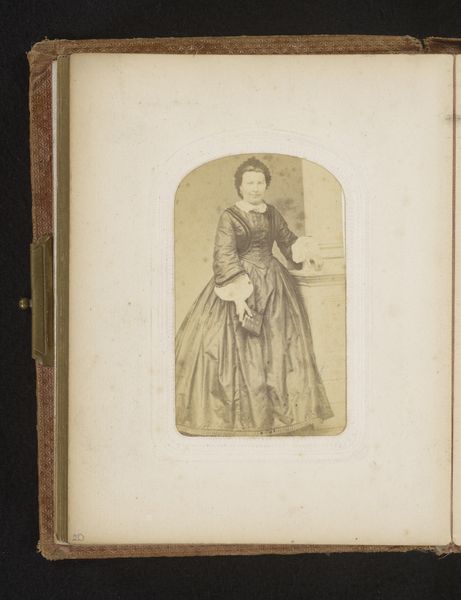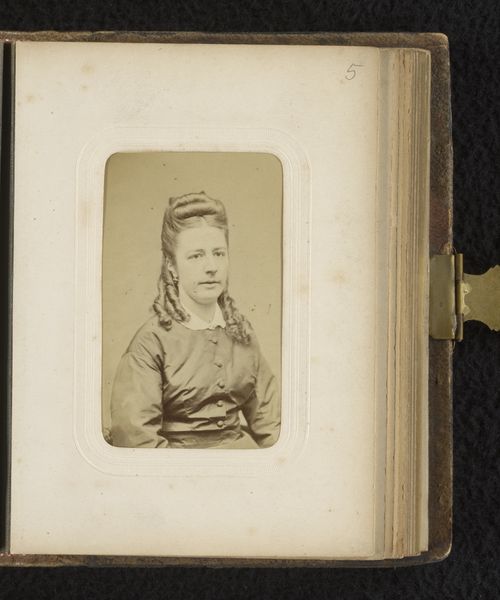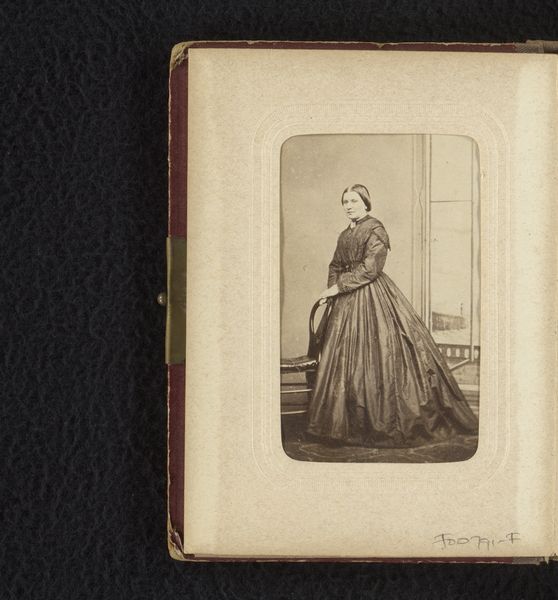
Portret van een zittende vrouw, aangeduid als tante Anne Nije, zus van Jonker-Nije 1861 - 1874
0:00
0:00
photography, albumen-print
#
portrait
#
photography
#
historical fashion
#
genre-painting
#
albumen-print
#
realism
Dimensions: height 85 mm, width 51 mm
Copyright: Rijks Museum: Open Domain
Curator: Here we have an albumen print from somewhere between 1861 and 1874, currently held at the Rijksmuseum. The piece is titled "Portret van een zittende vrouw, aangeduid als tante Anne Nije, zus van Jonker-Nije," and is believed to be the work of Albert Greiner. Editor: My immediate impression is of constrained domesticity, almost mournful. The tonal range is very narrow and the sitter is very rigidly posed, which makes her plaid dress the most dynamic element, compositionally. Curator: It's the composition that I find interesting. The frame within a frame – the photographic print nested inside the album page— emphasizes the artifice, while also underscoring its objecthood. It forces us to acknowledge the photograph as a constructed artifact. Editor: Yes, but the details carry significant weight. Consider the chair, richly ornamented. It speaks of status and belonging, as does her costume and general mode of dress. The stern look of the subject contrasts sharply with the decorative background. Is it intentional? Does it highlight a psychological discomfort of the individual within rigid social strata? Curator: A plausible interpretation. Yet, if we analyze only the forms, there is a dynamic interplay between hard geometric shapes and curvilinear ornamentation. The plaid of the dress offers a counterpoint to the curves of her fan and the carved details of the chair, creating a tense balance across the plane. Editor: The fan, held loosely, feels like a crucial signifier. Traditionally a symbol of flirtation, it lies almost dormant in her hand, hinting perhaps at suppressed desires, expectations. There's a melancholic distance. This could be Greiner's effort to preserve a memory or perhaps capture a certain persona as the sitter ages into a new century. Curator: Well, viewed as a product of its era, the albumen print embodies photographic realism, using tonal variation to map surfaces of clothing and skin onto a flattened plane, achieving the illusion of depth from the photographic material’s limitations. Editor: Perhaps, we can read the photographic realism and family photo album aesthetic as both a personal memento and an insightful view into how portraiture has transitioned across centuries and cultural beliefs about image and the construction of persona.
Comments
No comments
Be the first to comment and join the conversation on the ultimate creative platform.

